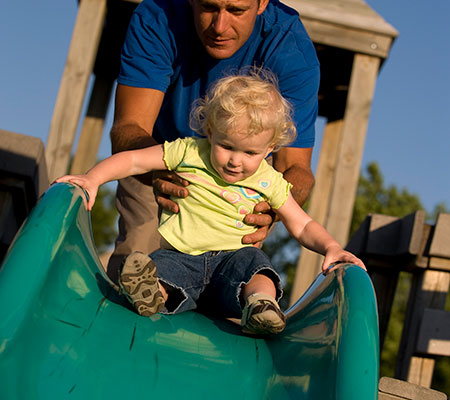
It’s summertime. School is out, but, thankfully, not forever. Kids are filling free time with outdoor play.
As kids ride bikes, play sports and scale playground equipment, scraped knees, sprained ankles and general bumps and bruises are inevitable. Here’s what you should know about caring for kids’ summertime injuries.
When to see a medical provider
“We see lots of abrasions and sprains during the summer,” said Lisa Kuester, a pediatric nurse practitioner for Marshfield Clinic.
Kuester said when your child gets injured, it’s good to see your medical provider if:
- You are worried about your child’s health.
- Your child suffered a head injury.
- Your child has a cut or wound that is gaping or difficult to clean.
- The cut or wound looks infected.
Keep kids safe on playground equipment
Kuester said parents should supervise their children on playground equipment. This means parents should minimize distractions and watch their kids closely.
Children shouldn’t wear loose clothing that could catch on a piece of playground equipment and pose a strangulation or injury risk. Kids should not use playground equipment inappropriately, like jumping off a swing.
“Many accidents happen on playground equipment, so parents need to be really attentive,” Kuester said. “Make sure your children are old enough to safely play on playground equipment.”
Simple ground rules
Apply sunscreen to kids before they go out to play, and make sure they drink plenty of water throughout their day. Check kids for ticks when they come inside from a day of outdoor play.
When kids play on trampolines, only one child at a time should jump, and there should be a protective cage surrounding the springy platform.
Kuester said helmets should always be worn when children ride bicycles or anything with wheels.
Treating injuries
If your child suffers a cut, follow these steps to clean the injury:
- Wash your own hands with soap and water.
- Clean the child’s wound with soap and water.
- Apply an antibiotic ointment containing bacitracin to the wound.
- Cover the wound with a bandage. It is best not to let a wound air out.
When your child suffers what you think is a sprain, see if he or she can put any weight on the injured area. If not, or if the injury is very swollen or black and blue, your child should see a provider.
“If your kid can put some weight on it, he or she can treat the sprain by icing it every couple of hours for 15-20 minutes for a day or two,” Kuester said. “Ibuprofen can be used for swelling and discomfort.”
A compression bandage, not applied too tightly, and keeping the injured area elevated also will help.
If you’re concerned about an injury your child has suffered, contact his or her provider.






Leave a Reply